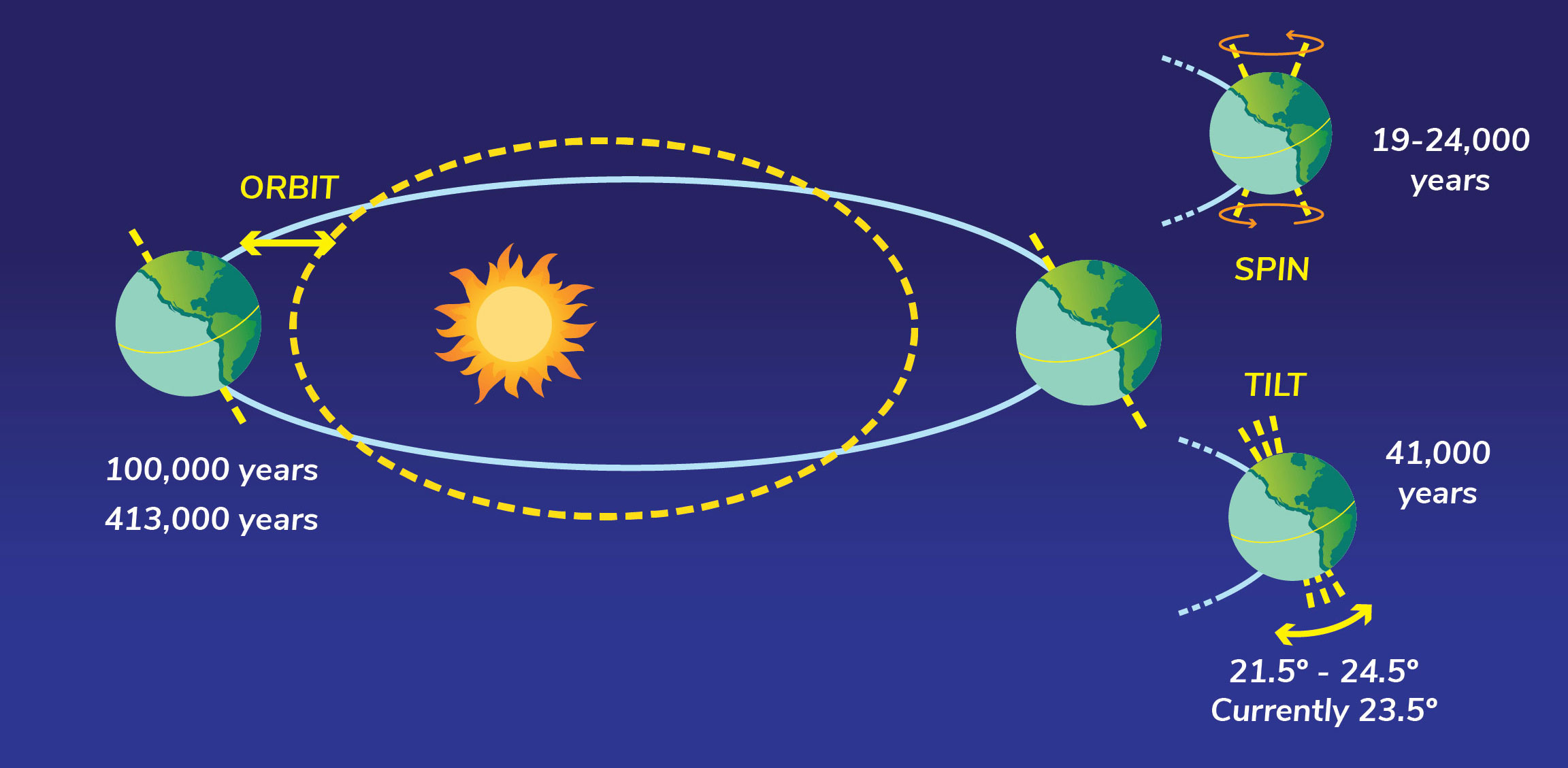The Orbiting Motion of the Earth Is Best Described as
θ y b sin. A satellite ground track may be thought of as a path along the Earths surface which traces the movement of an imaginary.

Drawing Shows Top Down View Of Earth S Orbit With Sun Near Center Showing Distances From Sun At Aphelion And Perihelion Sun And Earth Astronomy Earth
The Earths orbit is very nearly circular and it defines a plane in space called the plane of the ecliptic.

. This change is evidence that the Earth a. The period of the satellites orbit is closest to A 48 hours B 12 hours C 24 hours D 6 hours. Note that i Galaxy 3 has much more mass than Galaxies 1 and 2 which have equal mass and ii the arrows indicate the direction of the net total force of gravity exerted on each galaxy but not the strength.
It takes the Earth just under 24 hours to make one complete rotation. Both triangles have the same. The earth moves not only in one way but in two ways.
The Earths revolution is in the same counterclockwise direction as its rotation. In this drawing a planet is orbiting around the Sun. Newtons second law of motion can best be described as.
Consider a satellite elliptically orbiting the Earth the center of the Earth is located at the left foci point which is described by the position function relative to the center of the ellipse x a cos. Is an orbiting natural satellite b. It takes about one sidereal day.
Which diagram below best describes the net total force of gravity on each of the three galaxies shown at right. The time period is equal to 24 hours. Start studying the Astronomy Ch.
Which best compares the satellites. The orbiting motion of the Earth is best described as a. Earth moves in an elliptical orbit around the sun.
Revolves around the Sun c. What would happen to a rock released from the satellite. Rotates on its axis d.
We do not notice it because we are on Earth and we turn together with it. Satellite X has a greater period and a slower tangential speed than Satellite Y. Comparative Planetology and Formation Models flashcards containing study terms like The largest asteroid and probably the only one to be a spherical world is.
Consider a satellite orbiting the earth at 17500 MPH. Which best describes how the Earth formed. As the Earth moves around the orbit we say that the Earth revolves around the Sun to distinguish this motion from rotation.
This is the daily motion of the earth. Two satellites X and Y are orbiting Earth. When the Earth revolves around its imagined axis we call such a movement a rotation and when it revolves around the Sun - a revolution.
A geosynchronous satellite has an orbital period that matches the Earths rotation on its axis. On the Earth a freely swinging pendulum gradually shows a change in the direction of its swing. The fact that we fall back when we jump up motion of Earth around the Sun motion of the Moon around the Earth.
Has an elliptical orbit 2. Memorize flashcards and build a practice test to quiz yourself before your exam. Errors accumulate and there are slow and predictable changes in the orbital elements which are accounted for but basically Kepler rules.
A law of motion that states that an object at rest stays at rest and one in motion stays in motion. Yes and in fact they are so described. θ The derivatives of the position function are x a θ sin.
A ground track or ground trace is the path on the surface of a planet directly below an aircrafts or satellites trajectory. Satellite X is12 106 m from Earth and Satellite Y is 19 105 m from Earth. The movement of the earth around the sun in a fixed path or orbit is called Revolution.
Orbital Motion - quiz. E Gaspra Which planet by itself. The circular path of a satellite orbiting earth is characterized by a constant Which project involved the goal of orbiting a manned spacecraft around earth.
6 The Solar System. Answer 1 of 2. Each day the Earth rotates around its axis which is an imaginary line that passes through the Earths north and south poles.
A 10 km piece of rocky and metal debris in space orbiting the Sun is called an. According to Keplers Second Law of Planetary Motion a line drawn from a planet to the Sun sweeps out equal areas in equal time. The thinner triangle occurs over the same time period as the wider shorter triangle.
The earth takes about 24 hours to complete one rotation around its axis. The sun moves in an elliptical orbit around Earth and the suns gravity pulls Earth along. The rock would orbit the earth at a velocity of 17500 MPH next to the satellite.
The orbiting motion of the earth is best described as An asteroid exerts a 360-n gravitational force on a nearby spacecraft An earth satellite is simply a projectile freely falling around the earth. In the case of satellites it is also known as a suborbital track and is the vertical projection of the satellites orbit onto the surface of the Earth. They are widely used for communication internet and radio signals.
What is referred as the motion of the Earth around the sun. It revolves around its axis and revolves around the Sun. For some reason people believe that GPS satellites.
The period of rotation is known as the earthday.

Sign In Earth And Space Science Science Education Kindergarten Science

Earth S Spin Tilt And Orbit Understanding Global Change

Color Your Own Revolution Rotation Kits 12 Pc Oriental Trading Earths Rotation Earths Rotation Activities Fun Activities For Kids
No comments for "The Orbiting Motion of the Earth Is Best Described as"
Post a Comment